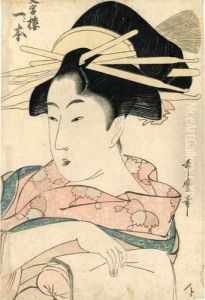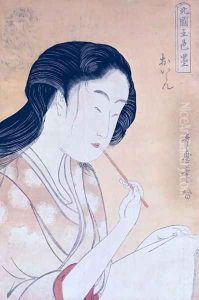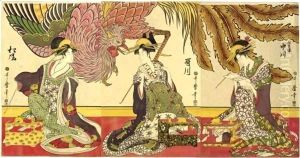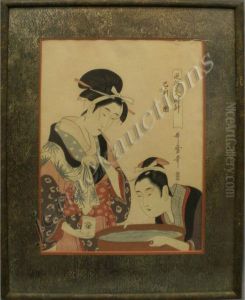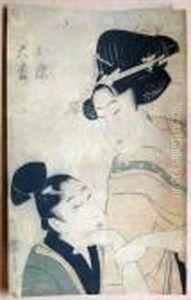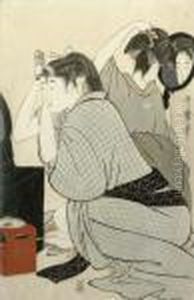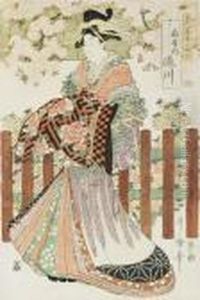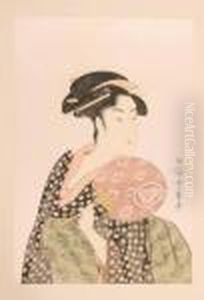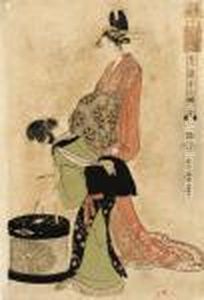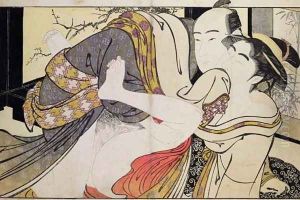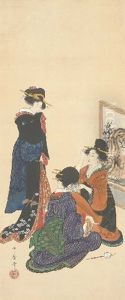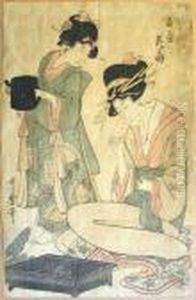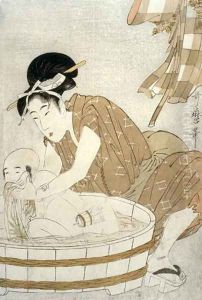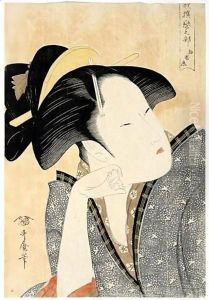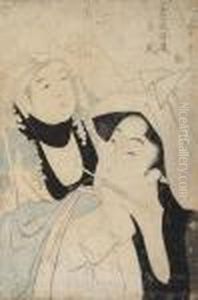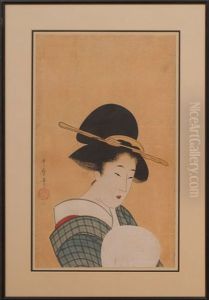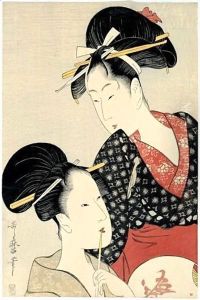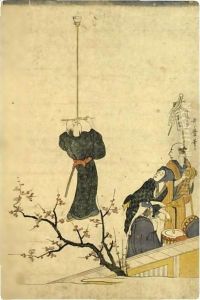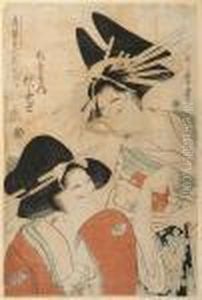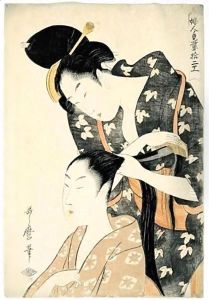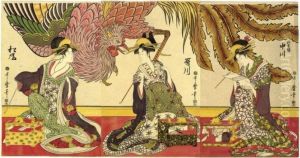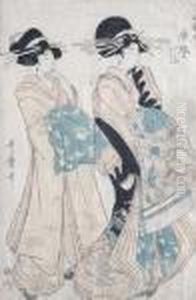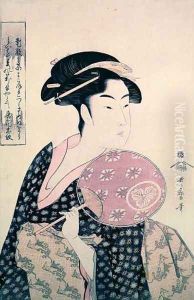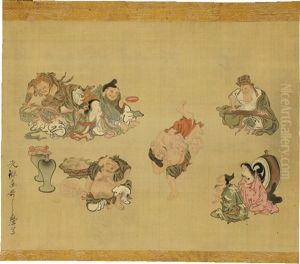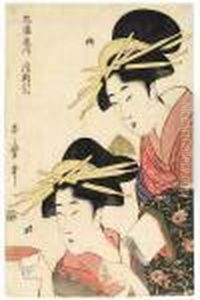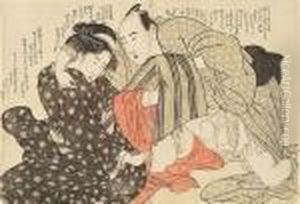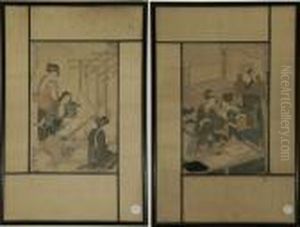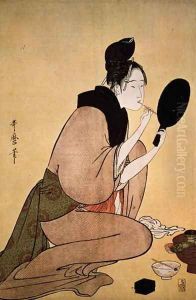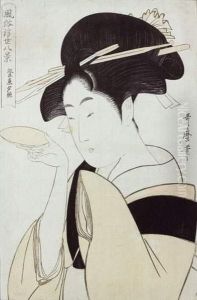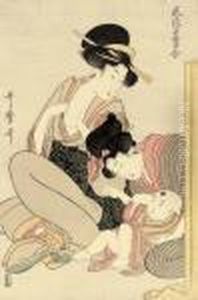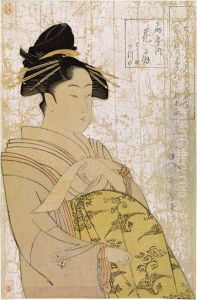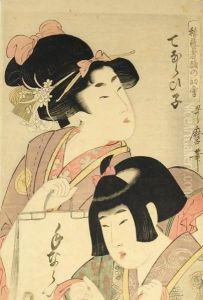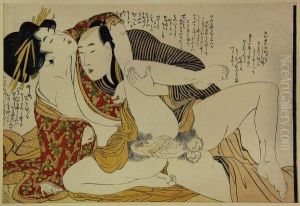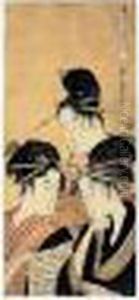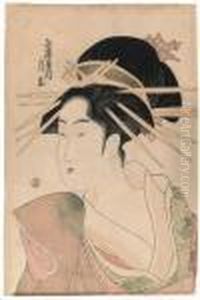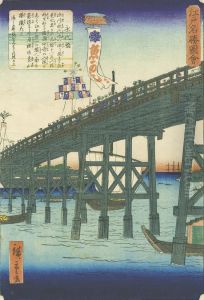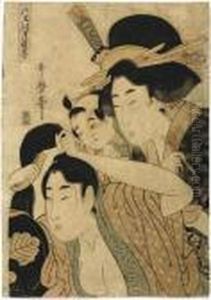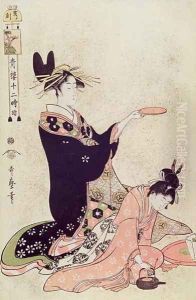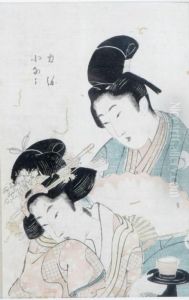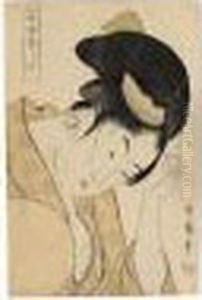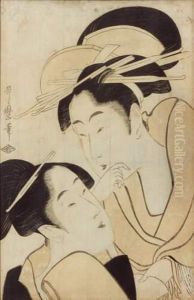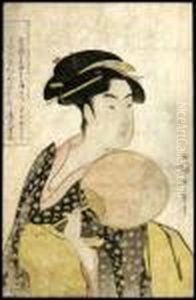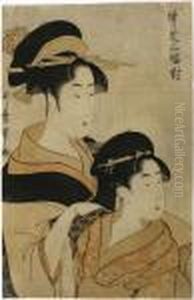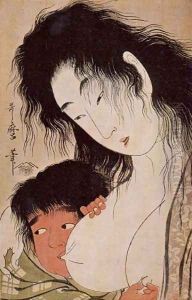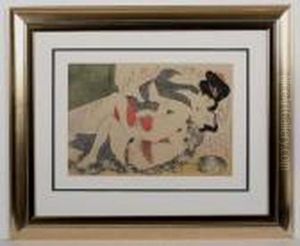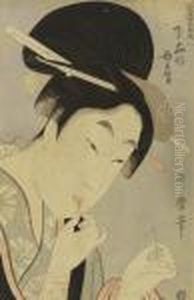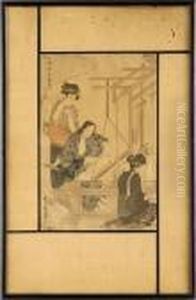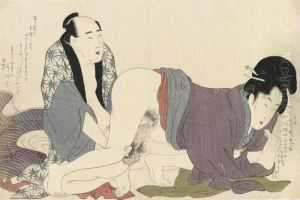Kitagawa Utamaro Paintings
Kitagawa Utamaro was a prominent Japanese artist known for his exquisite ukiyo-e woodblock prints, particularly those depicting female beauties, or 'bijin-ga'. Born around 1753 in Edo (modern-day Tokyo), Utamaro's early life details remain somewhat obscure, contributing to the enigmatic allure surrounding his persona. He originally studied under Toriyama Sekien, a well-regarded painter and printmaker of the time, who introduced him to the world of ukiyo-e, a genre focusing on the 'floating world' of pleasure and entertainment.
Utamaro's career took a significant turn in the 1780s when he began to focus on half-length portraits of women, diverging from the full-length prints that were common at the time. This innovative approach allowed him to capture more intimate and detailed expressions of his subjects, earning him fame and recognition. His work during this period is characterized by its elegant lines, refined depictions of the female form, and the subtle interplay of colors. He had a talent for portraying a wide range of female characters from different social backgrounds, including courtesans, geishas, and the everyday woman, with a sensitivity and insight that was unmatched by his contemporaries.
In addition to his portraits, Utamaro also produced a number of nature studies, shunga (erotic art), and illustrated books. His series 'Ten Studies in Female Physiognomy', 'A Collection of Reigning Beauties', and 'Array of Passionate Lovers' were particularly well-received, showcasing his versatility and deep understanding of human emotion and beauty.
Despite his success, Utamaro's life was not without controversy. In 1804, he was imprisoned and shackled for producing prints that depicted the military leader Toyotomi Hideyoshi with his concubines. This incident significantly impacted his health and is believed to have contributed to his death in 1806. Nevertheless, Utamaro's legacy as one of the greatest masters of ukiyo-e lives on. His innovative techniques, particularly his use of line and color, and his profound influence on the portrayal of women in Japanese art have cemented his status as a pivotal figure in the world of art.
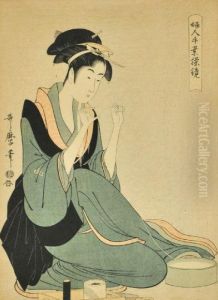
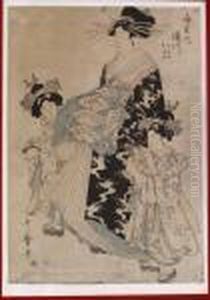
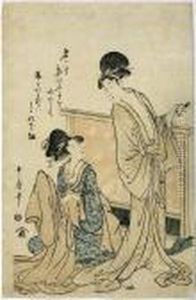
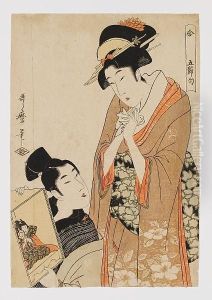
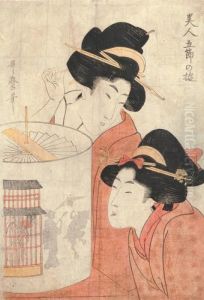

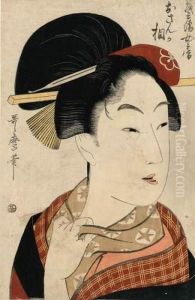
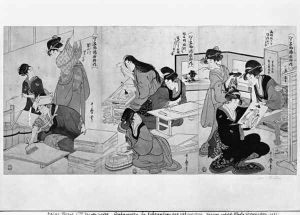
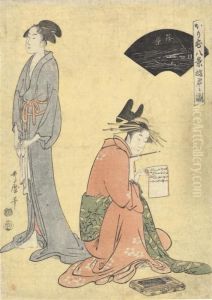
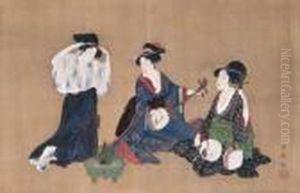
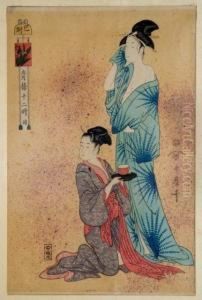
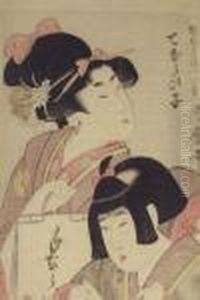
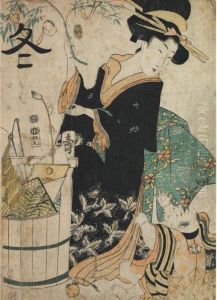
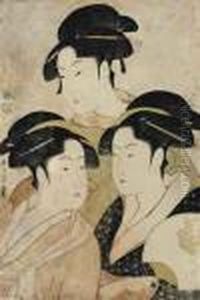
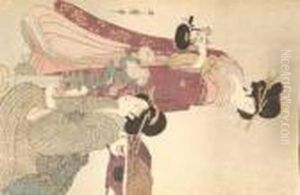
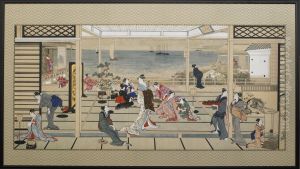
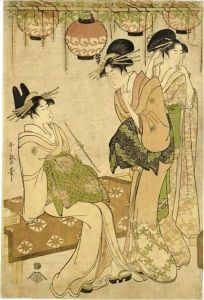
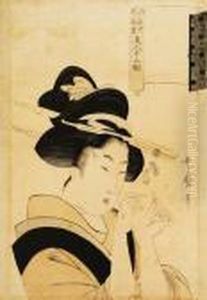
![Uma No Koku (the Hour Of The Horse [midday])](https://www.niceartgallery.com/imgs/2881443/s/kitagawa-utamaro-uma-no-koku-the-hour-of-the-horse-midday-b00a1614.jpg)
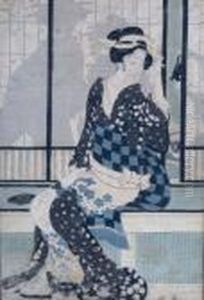
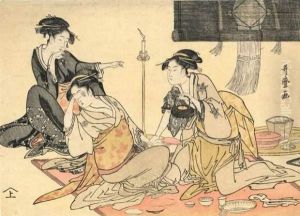
![From The Series Toji Zensei
Bijin Zoroe [an Array Of The Outstanding Beauties Of Our Day], One Of
Utamaro's Most Striking Compositions, The Courtesan Somenosuke Of
Matsubaya Opening A Letter With A Hairpin And Shielding The Contents
From Prying Ey](https://www.niceartgallery.com/imgs/2881548/s/kitagawa-utamaro-from-the-series-toji-zensei-bijin-zoroe-an-array-of-the-outstanding-beauties-of-our-day-one-of-utamaros-most-striking-compositions-the-courtesan-somenosuke-of-matsubaya-opening-a-letter-with-a-hairpin-and-shielding-the-contents-from-prying-ey-85270ea6.jpg)
